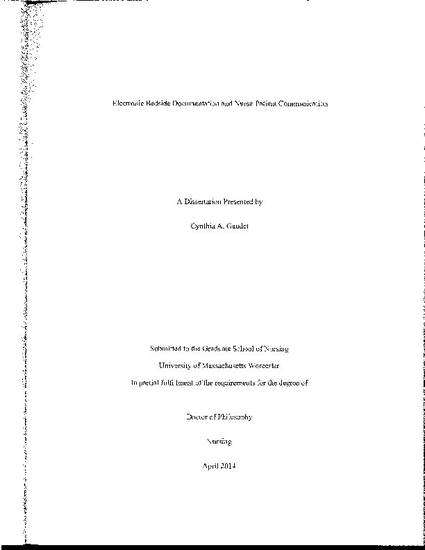
- Communication,
- Computers,
- Documentation,
- Electronic Health Records,
- Nurse-Patient Relations,
- Nurses,
- Patient Care Team,
- Workflow
Nurses are often the first members of the health care team with whom patients interact. The initial impression of the nurses’ receptiveness to the patients’ needs influences the patients’ views of their overall care. Researchers have suggested that understanding communication between individuals can provide the human link, or social element, to the successful implementation and use of electronic health records, including documentation (Lanham, Leykum, & McDaniel, 2012). Zadvinskis, Chipps, and Yen (2014) identified that the helpful features of bedside documentation systems were offset by the mismatch between the system and nurse’s workflow. The purpose of this micro-ethnography study was to explore the culture of nurse-patient interaction associated with electronic documentation at the bedside. Data were collected through passive participant observation, audio-taping of the nurse-patient interactions, and informal and semi-structured interviews with the nurses. A total of twenty-six observations were conducted on three nursing units at an urban healthcare facility in New England. These three units were occupied by similar patient populations and all patients required cardiac monitoring. Three themes consistently emerged from qualitative data analysis: the nurses paused during verbal communication, the nurses played a game of tag between the patient and the computer, and the nurses performed automatic or machine-like actions. The participants described these themes in the informal and semi-structured interviews. The nurses’ actions were observed during passive participant observation, and the audio-taped interactions supported these themes. Understanding the adaptation of caregiving necessitated by bedside electronic documentation will have a positive impact on developing systems that interface seamlessly with the nurses’ workflow and encourage patients’ active participation in their care.
Available at: http://works.bepress.com/cynthia-gaudet/1/
